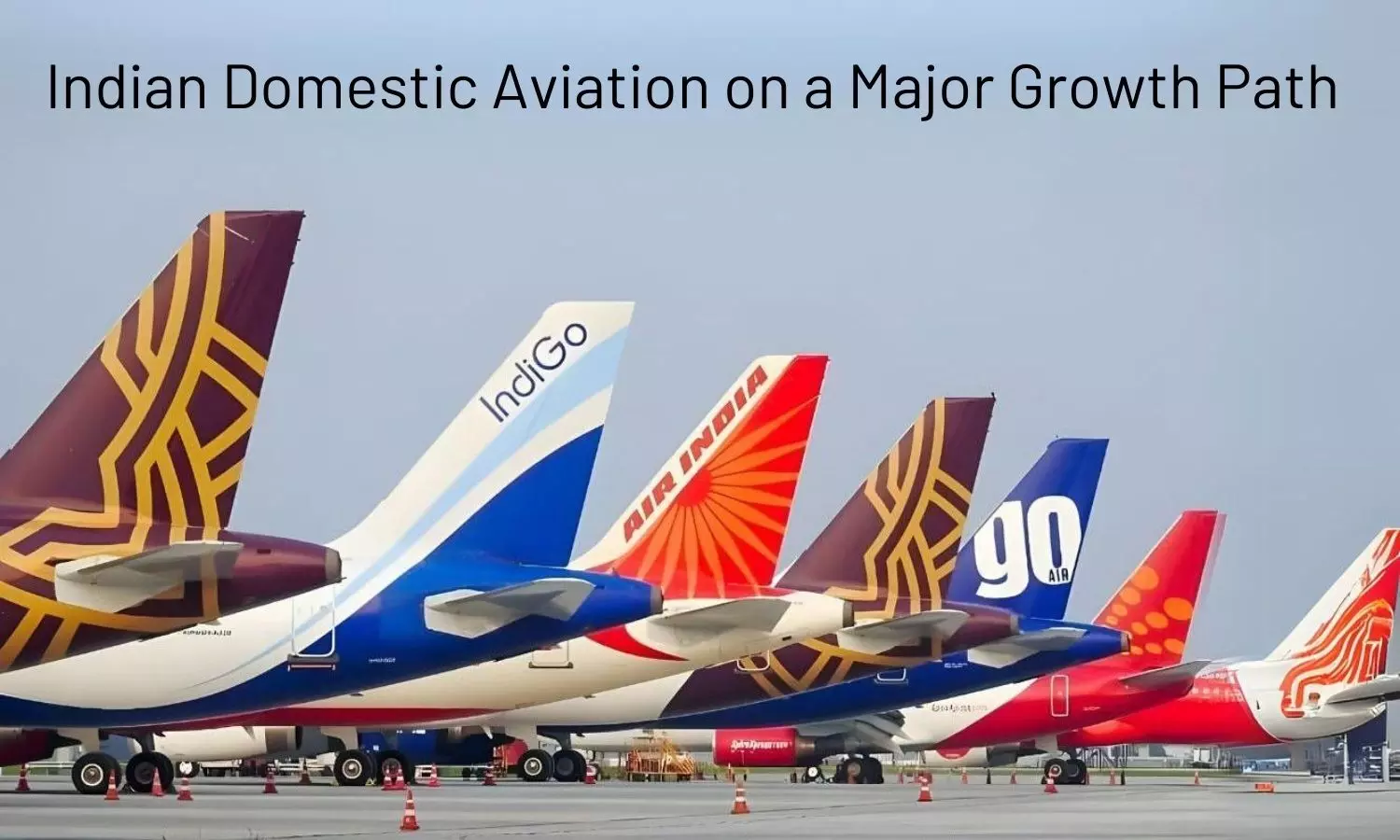Indian domestic aviation on a major growth path
Digital transformation is reshaping customer experience and operational efficiency
Indian domestic aviation on a major growth path

The domestic airline capacity has historically grown faster than international capacity, averaging 8.7% growth annually (between 2005 and 2024) compared to the six per cent international growth
The aviation sector stands at a pivotal juncture in 2024, marked by rapid innovation and evolving market dynamics. Globally, the industry is rebounding from the unprecedented impacts of Covid-19 pandemic, propelled by robust demand, technological advancements and renewed consumer confidence. The rest of the year ahead is set to witness significant growth in air travel, both in passenger and cargo segments, as airlines expand their networks and modernize fleets to meet the surging demand.
Environmental sustainability has become a central theme, driving the adoption of more fuel-efficient aircraft and the exploration of alternative fuels. Additionally, digital transformation is reshaping customer experience and operational efficiency, with advancements in AI, IoT, and data analytics playing key roles. The year 2024 also sees a heightened focus on enhancing connectivity in emerging markets, signalling a more inclusive and expansive growth trajectory for the global aviation industry.
In India, the flights market is expected to experience substantial growth in the coming years. By 2024, revenue for this market is projected to touch $48.31 bn, with a predicted annual growth rate (CAGR 2024-2028) of 3.50%. This will result in a market volume of $55.43bn by 2028.
Furthermore, the number of flights market users in India is expected to increase to 224.40 million users by 2028. Moreover, user penetration is projected to increase from 12.7% in 2024 to 15% by 2028. The average revenue per user (ARPU) is expected to be $263.00, which is a promising figure for companies operating in the flights market. Additionally, it is projected that online sales will account for 79% of total revenue by 2028.
India's domestic flight market is rapidly growing, with new airlines entering the market and an increase in demand from the country's expanding middle class.
Airline capacity in the country will reach 230 million departing seats in 2024 - almost double the 2014 figure- a sign that capacity growth is now back on track post-pandemic.
The domestic airline capacity has historically grown faster than international capacity, averaging 8.7% growth annually (between 2005 and 2024) compared to the six per cent international growth. This is largely due to historic restrictions around the ability of foreign-based carriers to operate internationally from India; for a long time there was a requirement for carriers to operate in the domestic market first, before being permitted to operate international services.
The potential for India in the coming decade is essentially two-fold – there is considerable opportunity for the domestic market to continue to grow and serve the world’s largest population more equitably than it currently does, and for the outbound services to really take off.
Testament to India’s strong domestic growth in the last decade has been Indigo, the homegrown low-cost carrier (LCC), which now operates just over half of all capacity in India, with 52% of seats in April 2024. Their share of the domestic market is largest, with 61% of seats, whilst internationally Indigo has 17% of the market (in capacity terms) and is second to Air India, which operates 24% of capacity - when we include Air India, Air India Express and Vistara. However, internationally other carriers dominate providing more than half of the country’s international capacity. When we look at this by Indian domiciled carriers versus overseas-based carriers, the split is clear-66% of seats are still operated by foreign carriers.
It is evident that Indigo’s focus has been on serving and growing the domestic market over the last few years and that shows no sign of abating. There has been a national push to improve connectivity in India and we intend to explore this further in this Indian aviation blog series, where we will also consider how closely infrastructure development is matching the growth in domestic air travel.
Compared to a mature aviation market such as the USA where there are three seats per head of population in the domestic market, India lags way behind with just 0.13 seats per head of population. It is also considerably behind, China which is approaching 0.5 seats per head of population.
Whilst Indigo and Air India have very significant aircraft orders – and Indigo cemented their international expansion plans with the announcement in mid-April 2024 of a wide-body order of 30 A350-900 aircraft - the addition of these to the Indian fleet at the country level will still only result in a fleet of just over 3,000 aircraft, whilst China boasts of a fleet in excess of 4,000 and growing.

